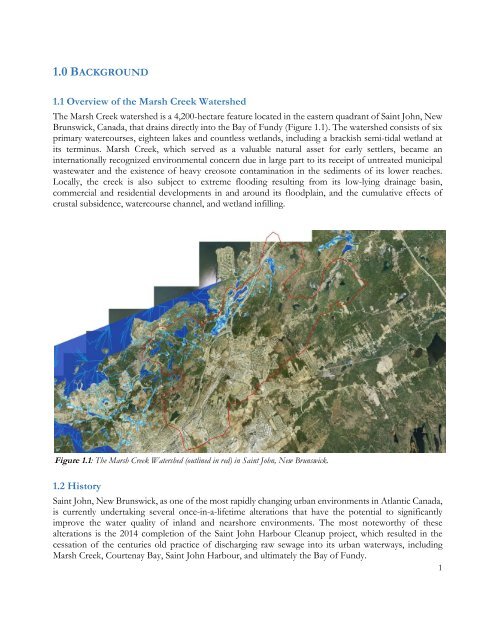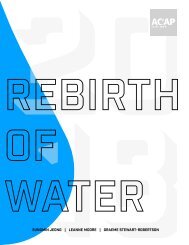Rebirth of Water Report 2016-2017
Marsh Creek, which is the largest watershed in greater Saint John, has been the recipient of centuries of untreated municipal wastewater deposition. Offensive odours, unsightly sanitary products and the threat posed by various human pathogens, resulting largely from the ~50 sewage outfalls in the lower reaches of Marsh Creek and the Saint John Harbour, have caused most residents to abandon the wellness of the watercourse. ACAP Saint John, a community-based ENGO and champion of the Harbour Cleanup project, has been conducting water quality monitoring and fish community surveys in the watershed since 1993 with the view towards someday restoring the ecological integrity of this forgotten natural asset.
Marsh Creek, which is the largest watershed in greater Saint John, has been the recipient of centuries of untreated municipal wastewater deposition. Offensive odours, unsightly sanitary products and the threat posed by various human pathogens, resulting largely from the ~50 sewage outfalls in the lower reaches of Marsh Creek and the Saint John Harbour, have caused most residents to abandon the wellness of the watercourse. ACAP Saint John, a community-based ENGO and champion of the Harbour Cleanup project, has been conducting water quality monitoring and fish community surveys in the watershed since 1993 with the view towards someday restoring the ecological integrity of this forgotten natural asset.
Create successful ePaper yourself
Turn your PDF publications into a flip-book with our unique Google optimized e-Paper software.
1.0 BACKGROUND<br />
1.1 Overview <strong>of</strong> the Marsh Creek <strong>Water</strong>shed<br />
The Marsh Creek watershed is a 4,200-hectare feature located in the eastern quadrant <strong>of</strong> Saint John, New<br />
Brunswick, Canada, that drains directly into the Bay <strong>of</strong> Fundy (Figure 1.1). The watershed consists <strong>of</strong> six<br />
primary watercourses, eighteen lakes and countless wetlands, including a brackish semi-tidal wetland at<br />
its terminus. Marsh Creek, which served as a valuable natural asset for early settlers, became an<br />
internationally recognized environmental concern due in large part to its receipt <strong>of</strong> untreated municipal<br />
wastewater and the existence <strong>of</strong> heavy creosote contamination in the sediments <strong>of</strong> its lower reaches.<br />
Locally, the creek is also subject to extreme flooding resulting from its low-lying drainage basin,<br />
commercial and residential developments in and around its floodplain, and the cumulative effects <strong>of</strong><br />
crustal subsidence, watercourse channel, and wetland infilling.<br />
Figure 1.1: The Marsh Creek <strong>Water</strong>shed (outlined in red) in Saint John, New Brunswick.<br />
1.2 History<br />
Saint John, New Brunswick, as one <strong>of</strong> the most rapidly changing urban environments in Atlantic Canada,<br />
is currently undertaking several once-in-a-lifetime alterations that have the potential to significantly<br />
improve the water quality <strong>of</strong> inland and nearshore environments. The most noteworthy <strong>of</strong> these<br />
alterations is the 2014 completion <strong>of</strong> the Saint John Harbour Cleanup project, which resulted in the<br />
cessation <strong>of</strong> the centuries old practice <strong>of</strong> discharging raw sewage into its urban waterways, including<br />
Marsh Creek, Courtenay Bay, Saint John Harbour, and ultimately the Bay <strong>of</strong> Fundy.<br />
1


















